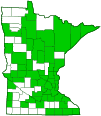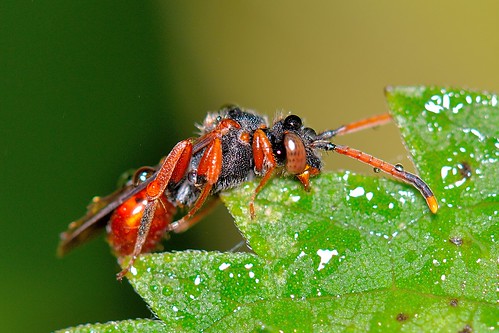nomad bees
(Nomada spp.)
Overview • Description • Distribution • Taxonomy
Description |
Nomad bees look more like wasps than a bees. Adults are 5 ⁄16″ to ⅜″ (8 to 10 mm) in length. They are usually black, black and red, or entirely red, with yellow, white, and/or red markings. The genus Nomada includes the only bees in North America that are entirely red. They have short, thin, and inconspicuous hairs on the body and no pollen-collecting hairs (scopa) on the hind legs. Many species have red legs. The compound eye is not centered over the mandible but is shifted slightly back. The wings are transparent and smoky. There usually are three submarginal cells, the first (innermost) as long as the second and third combined, the third (outermost) relatively short. The marginal cell is sharply pointed and ends on the outer wing margin. The lobe at the base of the hindwing (jugal lobe) is very small, shorter than the submedian cell, and rounded. |
Distribution |
||
|
Sources |
|
| 10/11/2024 | ||
Taxonomy |
|
Order |
Hymenoptera (ants, bees, wasps, and sawflies) |
Suborder |
Apocrita (narrow-waisted wasps, ants, and bees) |
Infraorder |
Aculeata (ants, bees, and stinging wasps) |
Superfamily |
Apoidea (bees and apoid wasps) |
Epifamily |
Anthophila (bees) |
Family |
Apidae (honey bees, bumble bees, and allies) |
Subfamily |
Nomadinae (nomad and related cuckoo bees) |
Tribe |
Nomadini (nomad bees) |
Subordinate Taxa |
|
articulated nomad bee (Nomada articulata) Bank’s nomad bee (Nomada banksi) black-and-yellow nomad (Nomada luteoloides) Cresson’s nomad bee (Nomada cressonii) cuneate nomad bee (Nomada cuneata) denticulate cuckoo nomad bee (Nomada denticulata) depressed cuckoo nomad bee(Nomada depressa) Graenicher’s cuckoo nomad bee (Nomada graenicheri) Illinois cuckoo nomad bee (Nomada illinoensis) imbricate cuckoo nomad bee (Nomada imbricata) neighborly nomad (Nomada vicina) obliterated nomad (Nomada obliterata) ovate cuckoo nomad bee (Nomada ovata) pygmy nomad bee (Nomada pygmaea) ruddy nomad bee (Nomada rubicunda) Say’s cuckoo nomad bee (Nomada sayi) spotted nomad bee (Nomada maculata) superb nomada (Nomada superba) |
|
Synonyms |
|
|
|
Common Names |
|
nomad bees |
|
Glossary
Jugal lobe
In Hymenoptera: The rear lobe at the base of the hindwing.
Scopa
A brush-like tuft of hairs on the legs or underside of the abdomen of a bee used to collect pollen.
Visitor Photos |
||
Share your photo of this insect. |
||
This button not working for you? |
||
Alfredo Colon |
||
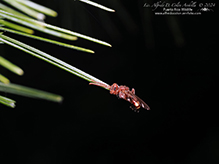 |
||
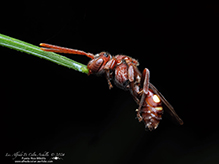 |
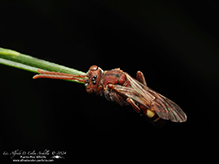 |
|
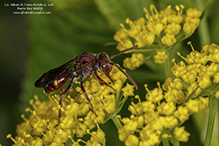 |
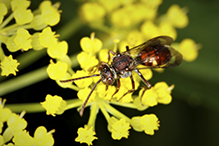 |
|
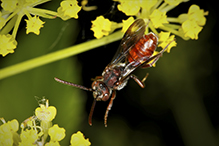 |
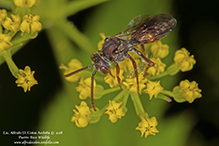 |
|
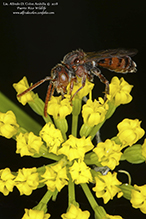 |
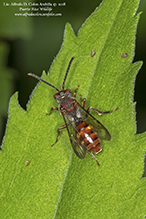 |
|
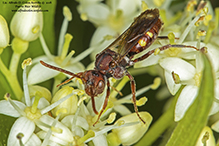 |
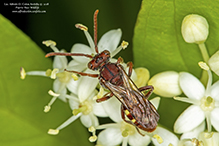 |
|
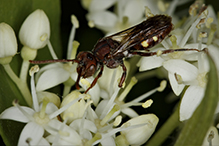 |
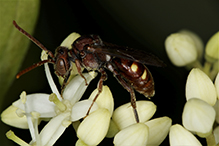 |
|
Babette Kis |
||
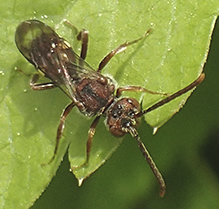 |
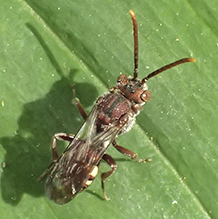 |
|
MinnesotaSeasons.com Photos |
||
|
||
|
||

Visitor Videos |
||
Share your video of this insect. |
||
This button not working for you? |
||
|
Other Videos |
||
Nomad Bee (A Bee That Looks Like A Wasp) |
About
Published on Apr 29, 2017 Nomad Bee (A Bee That Looks Like A Wasp) that is quite harmless to us. It is what is called a cleptoparasite in that it lays it's eggs in other Bee's nests and sometimes takes some of the pupae in that nest to eat. |
Nomada cuckoo bee? |
About
Published on Jul 19, 2017 This might be a Nomada bee, which is a cleptoparasite on andrena and other species of ground-nesting bees |
Female cuckoo bee Nomada lathburiana trying to enter a nest of a digging bee, Andrena vaga |
About
Published on Nov 6, 2016 https://waarneming.nl/waarneming/view/75538370 |
Nomada lathburiana stealing nest of solitary bee |
About
Published on Mar 29, 2014 |

Visitor Sightings |
||
Report a sighting of this insect. |
||
This button not working for you? |
||
| Alfredo Colon 6/10/2024 |
Location: Albany, NY |
 |
| Babette Kis 5/19/2021 |
Location: Barnes Prairie, Racine Co., WI |
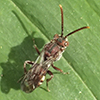 |
| Alfredo Colon 7/31/2018 |
Location: Woodbury, Minnesota |
 |
| Alfredo Colon 7/9/2018 |
Location: Woodbury, Minnesota |
 |
| Alfredo Colon 6/10/2018 |
Location: Woodbury, Minnesota |
 |
| Alfredo Colon 6/8/2018 |
Location: Woodbury, Minnesota |
 |
MinnesotaSeasons.com Sightings |
||
|

Created: 9/3/2018 Last Updated: © MinnesotaSeasons.com. All rights reserved. |
